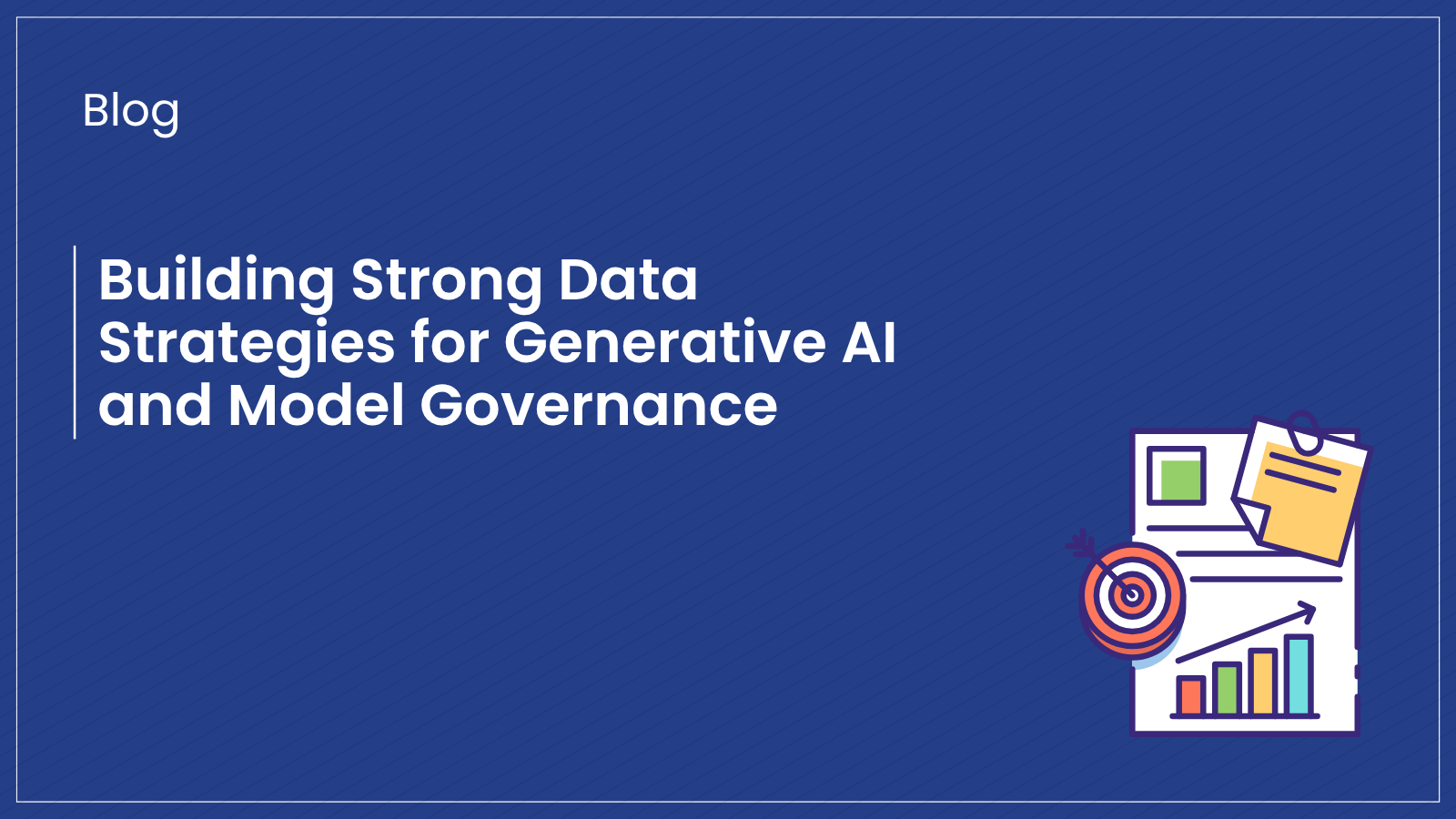Financial institutions can only unlock the full potential of generative AI when it is grounded in a strong Model Risk Management (MRM) framework - anchored in robust inventory, governance, and data literacy.
Rethinking Data Strategy in the Age of Generative AI
Data strategy today extends far beyond storage, access, and reporting. It has evolved into a core enabler of risk management, compliance, innovation, and growth.
At the center of this evolution lies generative AI powered by large language models (LLMs) and other advanced ML techniques, capable of synthesizing insights, automating workflows, and enhancing decision-making.
Yet in financial services, innovation cannot be separated from governance. Frameworks such as the Federal Reserve’s SR 11-7, the ECB’s TRIM guidance, and the UK PRA’s SS1/23 mandate that AI and advanced analytics models and use cases be treated as part of the official model inventory.
Without proper documentation, validation, and oversight, even the most advanced AI systems risk eroding the transparency, compliance, and trust they are meant to strengthen.
Simply put: Generative AI can transform business performance – but only when paired with disciplined governance and inventory management.
Why It Matters?
Generative AI offers undeniable strategic advantages — accelerating fraud detection, enhancing credit scoring, and enabling personalized insights. Yet, its power amplifies model risk if left unguided
a. Strategic Advantage
Generative AI accelerates data analysis, enhances fraud detection, strengthens credit risk modeling, and personalizes customer engagement. It allows financial institutions to move faster, automate more, and innovate safely.
b. Risk Management Imperative
When AI tools operate outside model governance frameworks, they introduce blind spots. Undocumented systems can lead to bias, hallucinations, or operational failures – exposing institutions to model risk and regulatory scrutiny.
c. Regulatory Imperative
- In the U.S., SR 11-7 guidelines by Federal Reserve defines a model as “a quantitative method, system, or approach” used to process inputs into estimates or decisions. This definition covers generative AI tools.
- In the EU, EBA Guidelines highlight the need for transparency and governance around models used in lending.
- UK’s PRA SS1/23 stresses the importance of managing the risks of AI and ML models within existing MRM structures.
These frameworks all converge on one principle: new technologies must still follow established governance frameworks.
Classifying AI as a Model: A Regulatory Case Study
An insurance firm deployed a generative AI solution to summarize claims documents. Initially, it wasn’t classified as a model – simply an operational tool. Months later, internal reviews revealed that claim decisions had been influenced by its outputs. Regulators flagged this as a governance failure, as the AI effectively functioned as a model without oversight.
The firm’s response:
- Integration into Inventory: The AI was formally added to the model inventory.
- Clear Accountability: Ownership was assigned to the Chief Data Officer.
- Enhanced Controls: Validation processes for accuracy, fairness, and explainability were established.
This shift not only mitigated regulatory risk but also enabled executives to use the tool more confidently across other functions.
Building the Foundations: Data & Literacy
A robust model inventory is only as strong as the data that supports it. Generative AI magnifies both the advantages of good data and the risks of poor-quality inputs.
Key enablers include:
- Breaking down silos: Enable enterprise-wide data governance, not fragmented oversight.
- Data literacy: Equip employees to understand how data fuels AI models – and where risks may arise.
- Upskilling: Train teams on bias detection, model drift, validation, and the regulatory expectations tied to them.
- Infrastructure investment: Modern data warehouses, master data management, and continuous quality monitoring underpin trustworthy models.
The Path Forward: Governance as the Foundation for Innovation
Generative AI represents a new frontier in financial services, but it is not a shortcut to bypass model risk management principles. Instead, it should be seen as an opportunity to modernize how institutions manage their inventory and governance frameworks.
- Inventory: Every generative AI tool that influences business decisions should be logged, classified, and assigned proper ownership.
- Governance: Policies must cover data quality, bias testing, hallucination monitoring, and regulatory reporting.
- Culture: Data democratization and literacy must ensure that the team treats AI models as shared assets, not “black boxes.”
The path forward is not about slowing down innovation but ensuring that innovation stands on the firm's foundations of compliance, risk management, and transparency.
How Solytics Can Help
As financial institutions increasingly adopt generative AI, one key challenge is governance at scale. Ensuring that every AI-driven model is properly identified, documented, validated, and monitored can quickly overwhelm traditional model risk frameworks.
This is where Solytics Partners bridges the gap. Through its MRM Vault and AI Vault platforms, Solytics enables institutions to embed governance, automation, and accountability across the full model and AI lifecycles.
With MRM Vault, institutions can:
- Centralize model inventory for all models – from traditional statistical to AI/ML to new-age GenAI models – ensuring full visibility and traceability and a 360-degree view of the entire inventory.
- Automated validation and monitoring workflows, capturing bias testing, drift analysis, hallucination tracking, and other key performance metrics in one centralized platform.
- Map ownership and accountability across model owners, validators, and governance teams to strengthen the three lines of defense.
- Generate regulator-ready evidence aligned with global frameworks such as SR 11-7, PRA SS1/23, and ECB TRIM.
Extending these capabilities, AI Vault enables continuous monitoring of prompt inputs, data provenance, and model outputs – ensuring compliance, explainability, and control over generative AI systems.
Regulations & Related Topics
- Federal Reserve SR 11-7 (U.S.) – Guidance on Model Risk Management
https://www.federalreserve.gov/supervisionreg/srletters/sr1107.htm - European Banking Authority (EBA) – Guidelines on Loan Origination and Monitoring
https://www.eba.europa.eu/regulation-and-policy/credit-risk/guidelines-on-loan-origination-and-moni…https://www.eba.europa.eu/regulation-and-policy/credit-risk/guidelines-on-loan-origination-and-moni… - UK Prudential Regulation Authority (PRA) – Supervisory Statement SS1/23: Model Risk Management Principles for Banks
https://www.bankofengland.co.uk/-/media/boe/files/prudential-regulation/supervisory-statement/2023/… - European Central Bank (ECB) – Targeted Review of Internal Models (TRIM)
https://www.bankingsupervision.europa.eu/ecb/pub/pdf/ssm.trim_project_report~aa49bb624c.en.pdf



_1.png)
_1.png)
.png)
.svg)


